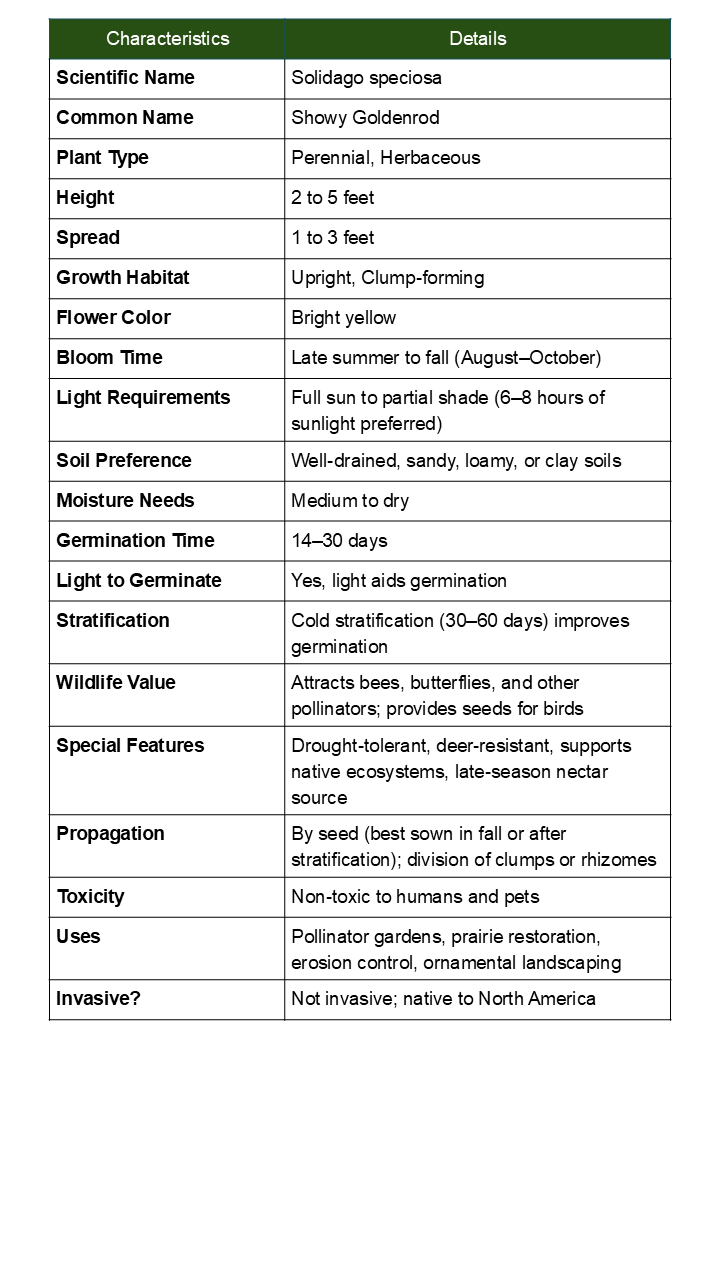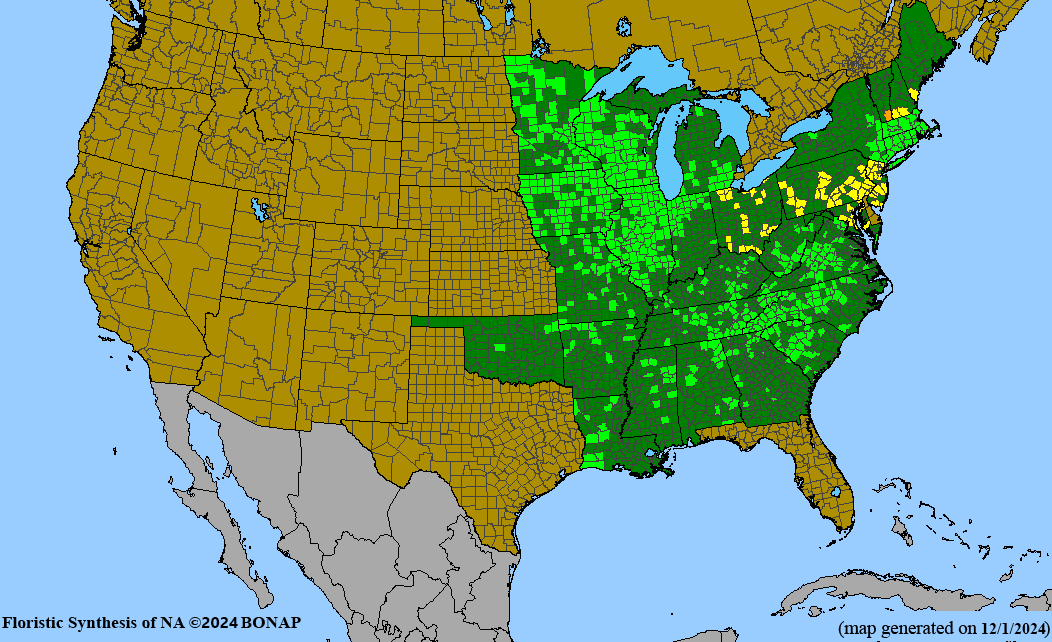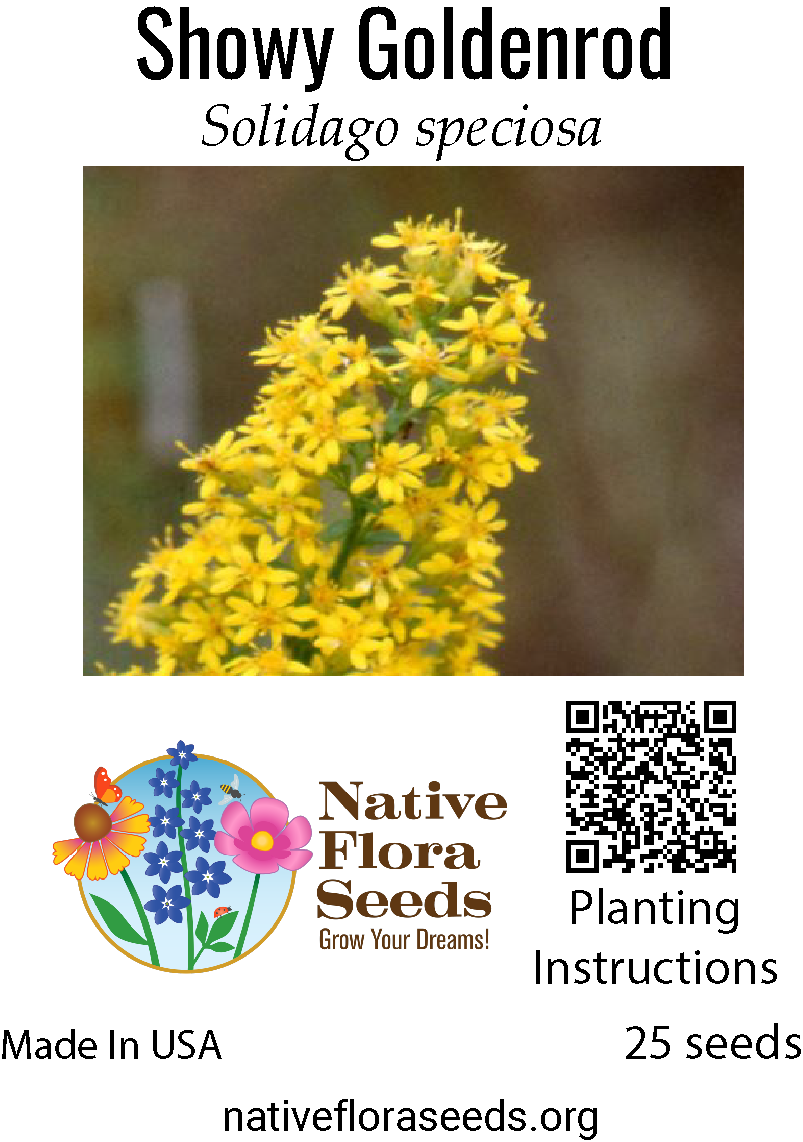Showy Goldenrod Seeds - Native Solidago Speciosa | Golden Fall Monarch Magnet
🌻 Experience the Spectacular Beauty of Showy Goldenrod
Discover the magnificent charm of Solidago speciosa, one of the most elegant native goldenrods that creates stunning pyramidal clusters of bright golden-yellow flowers in late summer and fall. This impressive perennial brings both dramatic height and exceptional wildlife value to your garden, serving as a crucial late-season nectar source when pollinators need it most.
✨ Key Features:
- Height: 3-5 feet tall with impressive upright habit
- Bloom Time: August through October (late season blooming)
- Flower Color: Brilliant golden-yellow in large, showy pyramidal clusters
- Native Range: Eastern and Central North America
- Hardiness: USDA Zones 3-8
- Sun Requirements: Full sun to partial shade
🦋 Outstanding Wildlife Benefits:
- Critical late-season nectar source for migrating monarch butterflies
- Attracts over 100 species of native bees, butterflies, and beneficial insects
- Seeds provide essential winter food for goldfinches and other songbirds
- Supports declining pollinator populations when they need it most
- Long-lasting blooms extend pollinator season into autumn
🌱 Easy Growing Guide:
- Soil: Well-drained soils, tolerates poor and dry conditions
- Drought Tolerance: Excellent once established
- Maintenance: Low maintenance, may spread by rhizomes
- Germination: Cold stratification recommended for 30-60 days
- Spacing: Plant 18-24 inches apart for natural colonies
🏡 Garden Uses:
Perfect for prairie restorations, naturalized areas, pollinator gardens, and fall displays. Creates stunning golden backdrops and provides crucial habitat for wildlife.
Create spectacular late-season displays while supporting migrating butterflies and native ecosystems. This essential prairie native brings both dramatic beauty and critical ecological value to sustainable gardens.



